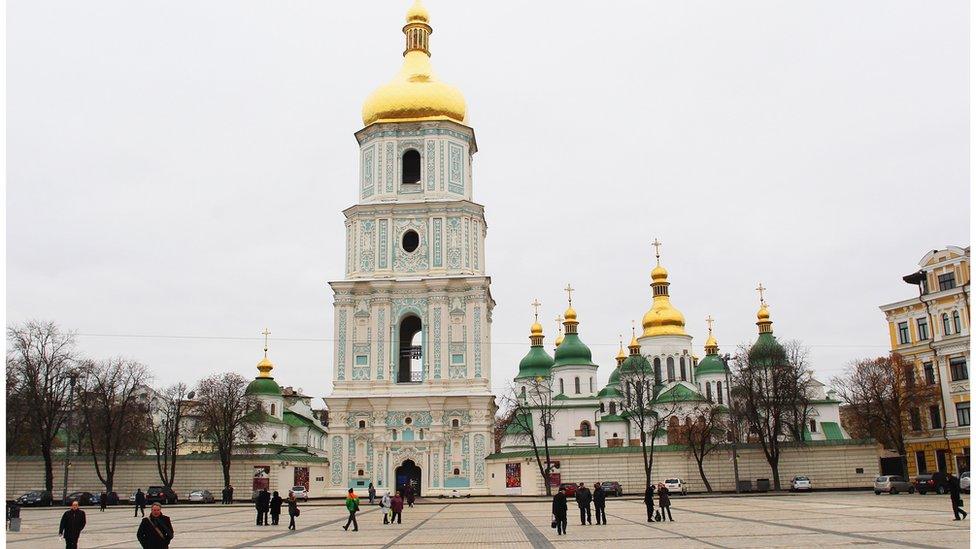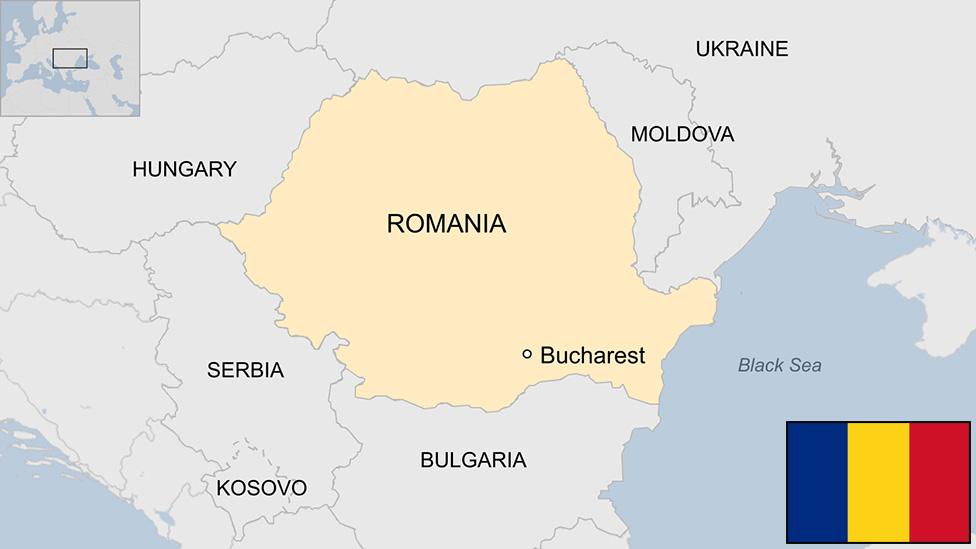Ukraine country profile
- Published
This page is no longer being updated. It was last updated on 27 January 2025

Europe's second largest country, Ukraine is a land of wide, fertile agricultural plains, with large pockets of heavy industry in the east.
While Ukraine and Russia share common historical origins, the west of the country has closer ties with its European neighbours, particularly Poland, and nationalist sentiment has been strongest there.
Ukraine gained independence after the collapse of the Soviet Union in 1991 and then veered between seeking closer integration with Western Europe and being drawn into the orbit of Russia, which sees its interests as threatened by a Western-leaning Ukraine.
An uprising against pro-Russian President Viktor Yanukovych in 2014 ushered in a series of Western-leaning governments.
That same year, Russia seized the Crimean peninsula and armed insurgent groups to occupy parts of the east. The Russian army eventually launched a full-scale invasion in February 2022.
Some estimates suggest that up to a million Russian and Ukrainians have been killed or injured in the first two and half years of fighting.
Read more country profiles, external - Profiles by BBC Monitoring, external
REPUBLIC OF UKRAINE: FACTS
Capital: Kyiv
Area: 603,550 sq km
Population: 33.4 million
Language: Ukrainian
Life expectancy: 68 years (men) 77 years (women)
LEADERS
President: Volodymyr Zelensky

Mr Zelensky's initial claim to fame was playing a fictional president in a television comedy programme, and his victorious election campaign echoed his character's anti-establishment stance.
His Servant of the People party went on to win early parliamentary elections in July 2019, giving him control of both the executive and the legislature.
President Zelensky went on to rally Ukraine's resistance to the Russian invasion in 2022. He declared martial law and a general mobilisation of the armed forces.
His leadership during the war has won him widespread international praise, and he has been widely seen as a symbol of Ukrainian resistance.
MEDIA

National media have adopted a united patriotic agenda following the Russian annexation of Crimea and the armed conflict in the east.
Ukraine has banned relays of leading Russian TVs; in turn, areas under Russian or separatist control have seen pro-Kyiv outlets silenced.
The authorities also block access to some popular Russian websites and social networks.
Ukrainians have changed their media consumption since the start of the full-scale war, with social media replacing TV as a top news source for Ukrainians, new TV channels continuing to launch despite the conflict, and the complete loss of popularity of Russian outlets.
Read full media profile
TIMELINE

Saint Sophia Cathedral in Kyiv
Some key dates in Ukraine's history:
1918 - Ukraine declares independence after Russian Revolution.
1921 - Soviet rule established as Russian Red Army conquers two-thirds of Ukraine.
1932 - At least seven million peasants perish in man-made famine during Stalin's collectivisation campaign.
1941-44 - Ukraine suffers terrible wartime devastation during Nazis occupation.
1945 - Allied victory in Second World War leads to conclusive Soviet annexation of west Ukrainian lands.
1986 - A reactor at the Chernobyl nuclear power station explodes, sending a radioactive plume across Europe.
1991 - As the Soviet Union heads towards dissolution, Ukraine declares independence.
2004 - Orange Revolution mass protests force pro-European change of government.
2014 - Maidan Revolution ousts pro-Kremlin government over stalled European Union association deal. Russia then seizes Crimean peninsula and launches insurgency to occupy parts of eastern Ukraine.
2022 - Russia launches a full-scale invasion in February, initially taking large areas of the eastern but fails in a bid to take Kyiv. Ukraine counter attacks, recapturing Kherson in November and pushing Russian forces back across the Dnipro river.
2023 - Fighting largely reaches a stalemate. The Kakhovka dam on the Dnipro river in southern Ukraine is destroyed, leading to widespread flooding and disruption. The dam was under Russian control at the time.
2024 - Fighting in much of eastern Ukraine becomes a war of attrition. Ukraine launches a counter-offensive into Russia's Kursk region. North Korean troops are sent to fight on Russia's side.

Some estimate up to one million Russians and Ukrainians had been killed or injured in first two and half years of fighting
Related topics
- Published31 July 2023

- Published5 June 2024

- Published20 January

- Published27 January

- Published25 March 2024

- Published18 December 2024

- Published4 November 2024

- Published25 October 2024

- Published4 June 2024
